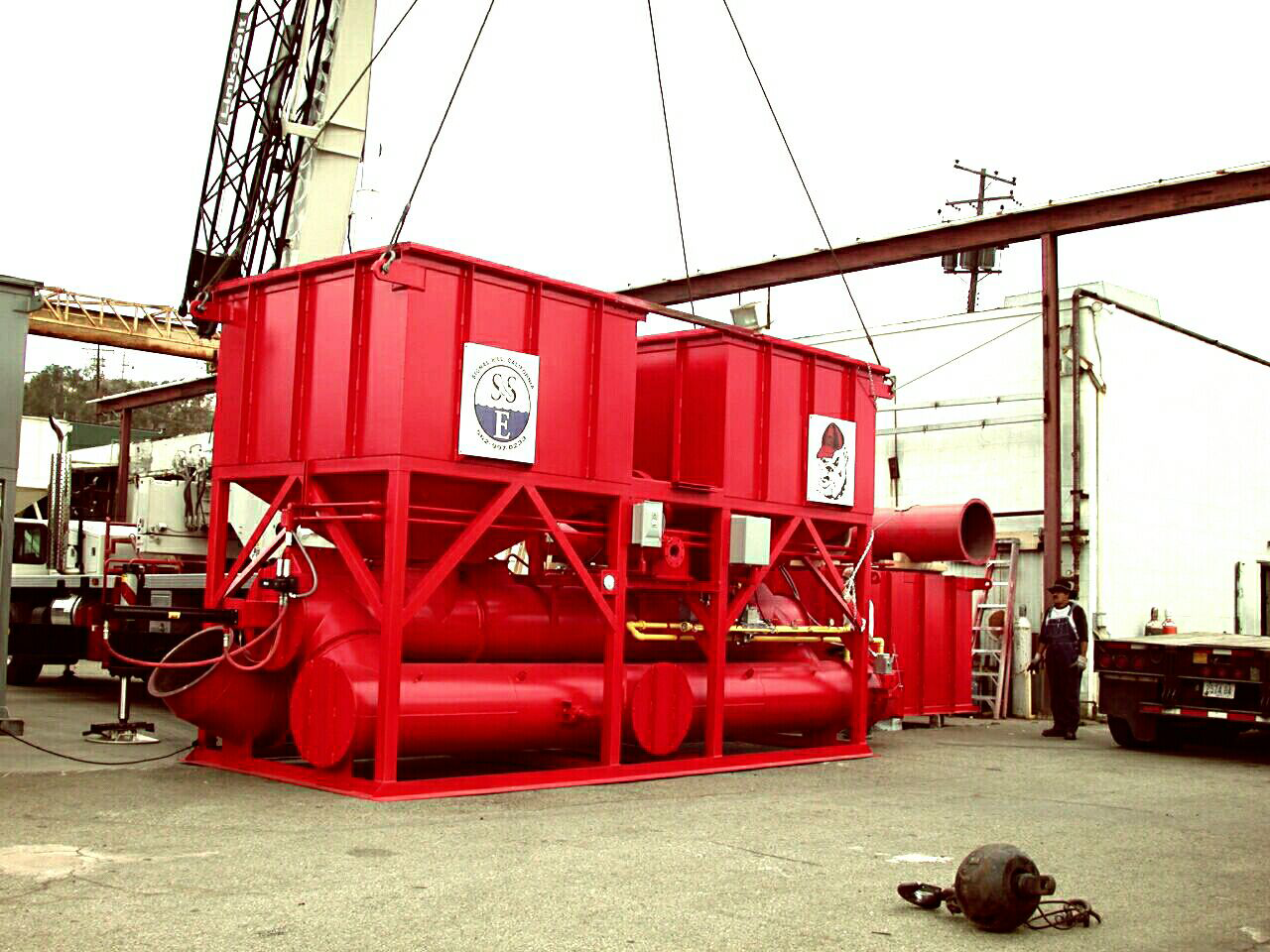
Mastering SGTO Startup and Shutdown Best Practices for Efficiency
June 6, 2025 9:41 amUnderstanding the Need for Proper SGTO Startup and Shutdown Processes
In today’s industrial landscape, the implementation of SGTO startup and shutdown best practices is critical. These processes are not just procedural formalities but are integral to the performance, safety, and efficiency of operations. As a leading provider of environmental solutions, Ship & Shore Environmental, Inc. recognizes the profound implications that proper SGTO operations have on overall industrial efficacy and sustainability. The necessity for meticulous attention to these procedures cannot be understated.
Implications of Incorrect SGTO Operations to Industrial Performance
Incorrect operations during the startup and shutdown phases of SGTO (Steam Generation and Thermal Oxidation) systems can lead to significant issues such as equipment damage, operational inefficiencies, and safety hazards. A misstep in the process could result in increased downtime, unforeseen maintenance costs, and potential safety risks to personnel. Moreover, inefficient startup and shutdown can lead to non-compliance with environmental regulations, potentially resulting in fines and a negative impact on the company’s reputation.
Objectives of ‘SGTO Startup and Shutdown Best Practices’ in enhancing Operational Efficiency and Compliance
At Ship & Shore Environmental, Inc., we aim to establish stringent SGTO startup and shutdown best practices that not only enhance operational efficiency but also ensure full compliance with industry standards and environmental regulations. These best practices are designed to streamline the processes, reduce risks, and improve performance. Our objective is to provide our clients with methodologies that not only sustain but also enhance the longevity and functionality of their equipment. In doing so, we contribute to safer operational environments and more sustainable industrial practices.
Delineating SGTO Startup Best Practices: Key Steps to Ensure Efficiency and Safety
Implementing effective SGTO startup and shutdown best practices begins with detailed and systematic procedures, guaranteeing safety and operational efficiency. The first key step is to conduct a thorough inspection of all equipment. Such inspections involve checking for potential mechanical issues or any signs of wear and tear that may jeopardize safety or performance.
During the startup process, pre-operational checks are indispensable. These checks encompass ensuring that all components are properly aligned and lubricated. Furthermore, verifying system pressures, temperatures, and levels is critical to confirm they are within the prescribed operational parameters.
Communication is paramount throughout the startup phase. Clear, consistent, and comprehensive communication among all team members can mitigate risks and ensure everyone is aware of their roles and responsibilities.
SGTO Shutdown Protocol: Ensuring Safe and Effective Equipment Cessation
Following an efficient and safe shutdown protocol is just as vital as the startup process. Proper SGTO shutdown procedures should systematically reduce equipment stress and wear, thereby prolonging its operational life.
A critical first step in the shutdown protocol is to gradually reduce the operational load. Abrupt cessation can lead to mechanical shock, potentially damaging the equipment. Monitoring system parameters like pressure and temperature during this phase is essential for managing an even descent to a safe, static state.
Communicating effectively throughout the shutdown phase is essential. All personnel should be informed of the progressing steps to ensure synchronization of all tasks. Additionally, locking and tagging out equipment is a necessary safety measure to prevent accidental restarts.
- Thorough pre-shutdown inspections to identify potential hazards.
- Gradual reduction of operational load to prevent mechanical shock.
- Continuous monitoring of pressure and temperature levels.
- Effective communication between all team members.
- Mandatory locking and tagging out of equipment.
The Role of Routine Maintenance in Successful SGTO Startup and Shutdown Procedures
Routine maintenance plays a pivotal role in the success of SGTO startup and shutdown best practices. Regular maintenance activities ensure the equipment remains in optimal condition, decreasing the likelihood of unexpected failures during the startup or shutdown processes.
Scheduling periodic inspections and servicing can preemptively address minor issues before they escalate into significant problems. This proactive approach includes checking for wear and tear, calibrating instruments, and replacing any compromised components. For instance, maintaining lubrication systems and ensuring that all seals are intact can significantly enhance performance and safety.
Ultimately, integrating routine maintenance into the overall operational strategy not only extends the lifespan of the equipment but also fosters a culture of safety and efficiency. This holistic approach to SGTO operations underscores our commitment to maintaining high standards of industrial performance.
Did you know? Proper SGTO startup and shutdown protocols can significantly enhance industrial efficiency, safety, and contribute to sustainability through reduced environmental impact.
Recap of SGTO Startup and Shutdown Best Practices
As we wrap up our exploration of SGTO startup and shutdown best practices, it’s imperative to recap the critical factors that contribute to the seamless operation of these complex systems. Properly adhering to the defined startup and shutdown protocols ensures not only the efficiency and safety of SGTO systems but also their long-term reliability. It’s clear that investing time and resources into understanding and implementing these processes can yield significant benefits, including enhanced compliance, reduced operational risks, and minimized downtime.
The Green Impact: How Proper SGTO Operation Contributes to Industrial Sustainability
One of the often-overlooked benefits of following SGTO startup and shutdown best practices is the positive environmental impact. By maintaining optimal operations, we significantly reduce the chances of emissions and energy wastage, thereby promoting industrial sustainability. Properly executed procedures ensure that machinery operates within designed parameters, which directly translates to lower carbon footprints and resource conservation. It’s not just about compliance; it’s about being responsible stewards of our environment while achieving operational efficiency.
Moving forward: Continual Improvement and Training for SGTO Operations
Looking ahead, the continuous improvement of our SGTO operational practices is pivotal. Regular training sessions for our personnel ensure that everyone is up-to-date with the latest protocols and technological advancements. Moreover, incorporating feedback from real-world operations can lead to refinements that enhance both safety and performance. Emphasizing the importance of routine maintenance and leveraging our aftermarket services ensures that our SGTO systems remain in peak condition, ready to operate effectively at any moment.
Ultimately, our commitment to rigorous adherence to SGTO startup and shutdown best practices represents our dedication to excellence in every aspect of our operations. Together, we can continue to push the boundaries of what’s possible, achieving unparalleled efficiency while contributing to a more sustainable industrial future.
FAQ
What are the key steps involved in SGTO startup?
In the startup of SGTO systems, first and foremost, a comprehensive check of all systems and components is crucial. This is followed by a controlled and gradual power phase-up, according to manufacturer specifications. Concurrently, it’s important to monitor system performance indicators to ensure everything is working within the safe operational limits. As we initiate these processes, it is also essential to keep communication channels open among the operating personnel.
How does proper shutdown of SGTO systems enhance safety?
Safeguarding the shutdown process involves careful coordination. Methodically powering down equipment, while following the outlined shutting sequences, significantly reduces the risk of mechanical stress and potential safety hazards. Additionally, this process aids in preserving the integrity of the system for subsequent operations, essentially extending equipment lifespan and ensuring that start-up next time is without issues.
Why is routine maintenance critical for SGTO systems?
Regular maintenance is the cornerstone of SGTO reliability. It ensures that all components are in optimal condition and functioning as intended. Timely detection and rectification of any wear and tear or potential issues are crucial for avoiding operational disruptions. Furthermore, it serves to affirm that the system is always in compliance with safety and environmental regulations, thus maintaining high standards of industrial sustainability.
How does proper operation of SGTO systems contribute to environmental sustainability?
By meticulously adhering to startup and shutdown protocols and routine maintenance, we significantly reduce the risk of inefficient operation, which can cause unnecessary emissions and energy waste. This commitment to precision not only minimizes our ecological footprint but also integrates sustainable practices within our industrial activities, aligning with broader environmental objectives.
What role does training play in ensuring effective SGTO operation?
Education and training are pivotal for the mastery of SGTO operations. Regularly updating our team’s knowledge and skills ensures they remain conversant with the latest industry standards and technological advancements. This investment in our personnel not only enhances the safety and efficiency of operations but also fosters a culture of continuous improvement within our organization.
Categorised in: Blog

